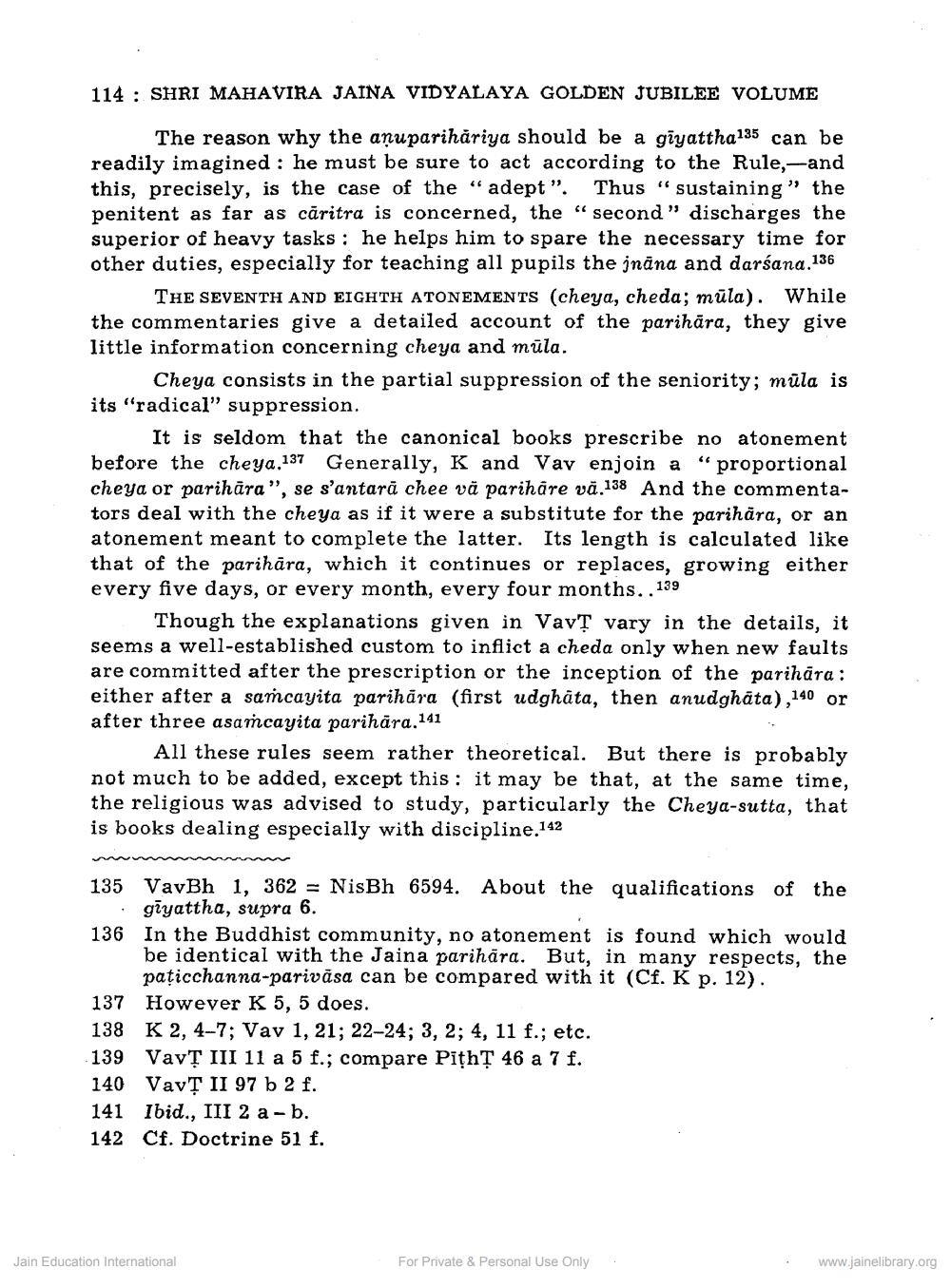________________
114 : SHRI MAHAVIRA JAINA VIDYALAYA GOLDEN JUBILEE VOLUME
The reason why the anuparihariya should be a gīyattha135 can be readily imagined : he must be sure to act according to the Rule,-and this, precisely, is the case of the “adept". Thus "sustaining" the penitent as far as cāritra is concerned, the “second" discharges the superior of heavy tasks: he helps him to spare the necessary time for other duties, especially for teaching all pupils the jnana and darśana.136
THE SEVENTH AND EIGHTH ATONEMENTS (cheya, cheda; mūla). While the commentaries give a detailed account of the parihāra, they give little information concerning cheya and müla.
Cheya consists in the partial suppression of the seniority; müla is its "radical" suppression.
It is seldom that the canonical books prescribe no atonement before the cheya.137 Generally, K and Vav enjoin a “proportional cheya or parihāra", se s'antară chee vă parihäre vä.138 And the commentators deal with the cheya as if it were a substitute for the parihāra, or an atonement meant to complete the latter. Its length is calculated like that of the parihāra, which it continues or replaces, growing either every five days, or every month, every four months. . 139
Though the explanations given in Vavī vary in the details, it seems a well-established custom to inflict a cheda only when new faults are committed after the prescription or the inception of the parihara: either after a samcayita parihara (first udghāta, then anudghāta), 140 or after three asamcayita parihāra.141
All these rules seem rather theoretical. But there is probably not much to be added, except this: it may be that, at the same time, the religious was advised to study, particularly the Cheya-sutta, that is books dealing especially with discipline.142
135 VavBh 1, 362 = NisBh 6594. About the qualifications of the
gīyattha, supra 6. 136 In the Buddhist community, no atonement is found which would
be identical with the Jaina parihara. But, in many respects, the
paticchanna-parivāsa can be compared with it (Cf. K p. 12). 137 However K 5, 5 does. 138 K 2, 4-7; Vav 1, 21; 22-24; 3, 2; 4, 11 f.; etc. 139 VavŢ III 11 a 5 f.; compare Pithự 46 a 7 f. 140 VavŢ II 97 b 2 f. 141 Ibid., III 2 a - b. 142 Cf. Doctrine 51 f.
Jain Education International
For Private & Personal Use Only
•
www.jainelibrary.org




